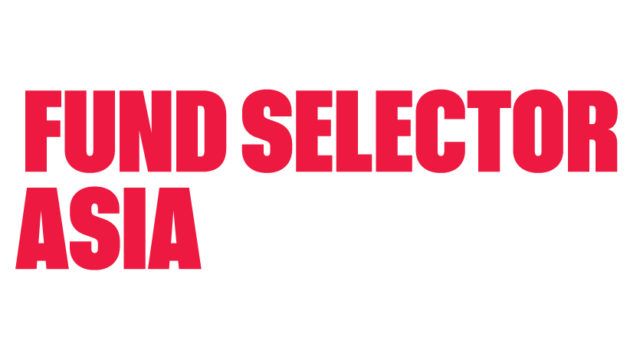Renewed attention is on China’s slowing GDP growth and government efforts to push through serious structural reforms.
At the same time, China continues with cross-border initiatives. The RMB Qualified Foreign Institutional Investor license pilot programme has expanded beyond Hong Kong to Singapore, the UK, Germany and South Korea, giving managers access to onshore Chinese securities and the Hong Kong-Shanghai stock connect which allows for cross-border equities trading, is expected to launch imminently.
With China as our theme, we take a look at Threadneedle China Opportunities Fund and UBS (Lux) Equity Fund – China Opportunity.
Both funds seek to invest at least two-thirds of capital in equity shares of companies that are either domiciled in China or have their core business in the mainland.
Launched in 1996, the UBS fund with $723.5m in assets has a longer track record and larger size than the Threadneedle fund, which launched in 2007 and has $150.7m in assets.
“Although both funds use the MSCI China as the benchmark, the UBS fund is allowed under the mandate to exploit the best opportunities in China, unconstrained by the reference index,” said Terence Tan, head of product strategy at BSI Bank.
Investment strategy review
According to Tan, UBS seeks to find future leaders of the industry, leading to a higher exposure to mid- and small-cap stocks with nearly 51.6% of the fund being invested in such companies.
“The manager is willing to demonstrate a high willingness to take off-benchmark bets. Four out of its top 10 holdings are mid and small caps,” Tan said.
Tencent Holdings is the top pick of the UBS fund with 9.55% weighting in the fund, followed by the TAL Education group (7.29%), PetroChina (3.30%), and AIA Group (3.20%).
The top 10 holdings in the UBS fund represent over 37% of the fund’s assets, almost similar to top 10 stock picks of the Threadneedle fund (39.2%).
But, the Threadneedle fund is skewed towards large-cap/mega-cap stocks, with no holdings in the mid-cap space, Tan added.
“[There are] very limited overlaps in top 10 holdings across both funds, with the overlaps constrained to Tencent and PetroChina.”
The top pick of the Threadneedle fund is also Tencent, with an 8.7% allocation, followed by China Construction Bank (4.8%), Bank of China (4.7%) and China Mobile (4.6%).
UBS is overweight in informational technology (17.6% as against 4.4% of the benchmark index), healthcare (15.2% compared with 13%), consumer discretionary (11.8% compared to 6.4%).
Threadneedle is overweight in the same cateogries as UBS, but has additional overweighting in industrials, utilities and materials sectors.
Notably, the UBS fund holds 20% in cash compared to the 1.5% held by the Threadneedle fund.
Performance review
“The UBS fund has outperformed the reference benchmark since Bin Shi took over the fund management [in June 2010], although the outperformance only came about since late 2013,” noted Tan.
“The Threadneedle fund delivered outperformance since Vanessa Donegan took over the fund management in Oct 2013.”
According to FE Analytics data, the UBS fund recorded a 28.6% return in 2013 while the Threadneedle fund registered a 23.8% return.

Over a five-year period until 30 September, the UBS fund posted a 13.2% return. During the same five-year period, the Threadneedle fund showed a 28.3% return.
Tan believes the UBS fund could do well in an environment where the market is positive toward risk and therefore provides more positive sentiment for mid- and small-caps, which the fund is biased toward.
However, when risk is off, the Threadneedle fund could be the better performer.
“In a scenario when the market is choppy, people are fearful [and there is often] a flight to quality. [In this situation] the UBS fund could underperform given its higher weighting to mid- and small-caps as generally investors will be keener to seek exposure to large-cap, liquid, blue chip stocks.”
Over a four-year period until 30 September, both the funds floundered. The Threadneedle fund’s returns fell by 20.5% while that of the UBS fund dipped by 35.4%.
“In a higher beta environment, the Threadneedle fund could underperform, especially if small- and mid-cap stocks become the flavor of the month.”
For a two-year period ended 30 September, the Threadneedle fund gave a 25.9% return compared to 36.6% for the UBS fund.
Portfolio Managers
Vanessa Donegan has been the lead manager for the Threadneedle fund since October 2013. She is the head of Asia Pacific equities and also has analytical responsibilities for investments in Singapore, Australia and New Zealand. During her career that started in 1981, she has also worked with Allied Dunbar Asset Management, which became part of Threadneedle in 1994.
Natasha Ebtehadj, deputy manager also works with Donegan.

Bin Shi who has over 17 years of investment management experience has been managing the UBS fund since June 2010 along with Hai Huang, deputy manager. Shi joined UBS Global Asset Management in January 2006 and specialises in the Greater China region.

Fees

Both the Threadneedle and the UBS fund charge a 5% subscription fee. The management fees for the UBS fund (1.87%) are higher than the Threadneedle fund’s 1.5%.
The total expense ratio of the UBS fund for the year ended November 2013 was 2.38%. The TER for the Threadneedle fund was 1.7% as of 30 April 2014.
Conclusion

“If an investor believes in a more positive economic environment for China, with a strong economic growth outlook, it is likely the UBS fund could deliver stronger outperformance,” Tan said.
He added it is difficult to compare the two funds as Donegan took charge of managing the Threadneedle fund only in Oct 2013.

















